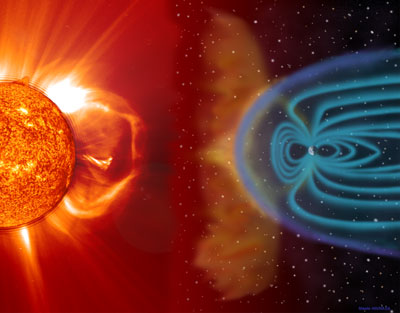[Source: GPS world]
EGNOS signals are potentially vulnerable, however, to the effects of high solar activity on the ionosphere — the electrically active upper layers of our atmosphere — which can cause signal « scintillations » and time delays.
This new effort will increase system robustness and service availability against severe ionospheric severe effects that began last year and are expected to continue until the peak of the solar cycle expected in 2013–14.

This illustration shows a CME blasting off the Sun’s surface in the direction of Earth.
The left portion is composed of an EIT 304 image superimposed on a LASCO C2 coronagraph.
Two to four days later, the CME cloud is shown striking and beginning to be
mostly deflected around the Earth’s magnetosphere. The blue paths emanating
from the Earth’s poles represent some of its magnetic field lines. The magnetic
cloud of plasma can extend to 30 million miles wide by the time it reaches earth.
These storms, which occur frequently, can disrupt communications and navigational
equipment, damage satellites, and even cause blackouts.